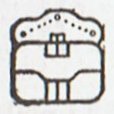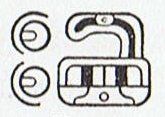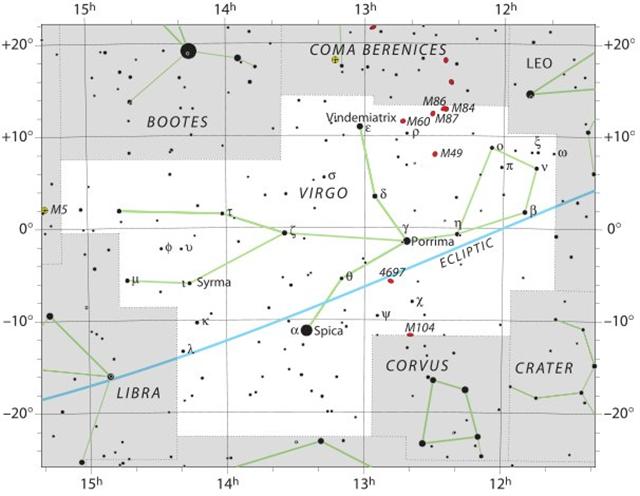According to Metoro there was only one place in
the C text where the drums were sounding (rutua te pahu),
viz. in Gregorian day 295 (October 22) when Arcturus was close
to the Full Moon:
|
April 17 (107) |
18 |
19 |
20
|
 |
 |
 |
 |
|
Cb1-1 (393) |
Cb1-2 |
Cb1-3 |
Cb1-4 |
|
E tupu - ki roto |
o te hau tea |
ki te henua - te maro |
|
Al
Sharatain-1 / Ashvini-1 /
Bond-16 |
ι
Arietis (28.0), λ Arietis (28.2) |
Alrisha, χ Phoenicis (29.2) |
2h
(30.4) |
|
Polaris, Baten Kaitos (26.6), Metallah (26.9),
Segin, Mesarthim, ψ Phoenicis (27.2),
SHERATAN,
φ Phoenicis (27.4) |
Alamak (29.7), κ Arietis (30.3), Hamal (30.5) |
|
October 18 (291) |
19 |
20 |
21 |
|
φ Centauri (211.0),
υ¹ Centauri (211.1) |
υ² Centauri (211.8),
τ Virginis (211.9), Agena (212.1), θ Apodis
(212.5) |
14h
(213.1) |
no star listed |
|
Thuban (212.8), χ
Centauri (213.0), Menkent (213.1) |
|
April 21 (111) |
22 |
23 |
 |
 |
 |
|
Cb1-5 |
Cb1-6 |
Cb1-7 (399) |
|
no
star listed |
η
Arietis (31.9) |
θ
Arietis (33.3) |
Mira
(33.7) |
|
October 22 (295) |
23 |
24 |
|
Al Ghafr-13 / Svāti-15 /
Neck-2
/ A3 / T6 |
Syrma, λ Bootis
(215.6), η Apodis (215.8), ι Lupi, 18 Bootis
(216.3), Khambalia (216.4), υ Virginis (216.5) |
ψ Centauri (216.6),
ε Apodis (216.8) |
|
Asellus Tertius,
κ VIRGINIS, 14
Bootis (214.8), 15 Bootis (215.2,
ARCTURUS (215.4),
Asellus Secundus (215.5) |
|
April 24 |
25 |
26
(116) |
27 |
 |
 |
 |
 |
|
Cb1-8 |
Cb1-9 |
Cb1-10 |
Cb1-11 (403) |
|
ξ
Arietis (35.0) |
no
stars listed |
ν
Arietis (38.5) |
|
October 25 |
26 |
27
(300) |
28 |
|
Asellus Primus
(217.8), τ Lupi (218.1) |
φ Virginis (218.7),
σ Lupi (219.1), ρ Bootis (219.5) |
Haris (219.7). σ
Bootis (220.2), η Centauri (220.4) |
ρ Lupi (221.0),
Toliman (221.2) |
|
rutua -
te pahu - rutua te maeva - atua rerorero
- atua hiko ura - hiko o tea - ka higa te ao ko
te henua ra ma te hoi atua |
Unless Metoro thought of κ Virginis
(or some lesser star) it
ought to have been Arcturus which was on his mind. In
either case the accumulation of 'star pillars' in the night sky of April
21 (111) could have provoked the idea of drums sounding.
The first Chinese station was Horn
ruled by Spica (α Virginis)
which rose heliacally in day 283 (October 10, 10-10 or
8-10).
The 13th Arab manzil Al Ghafr was
not ruled by Arcturus, but
possibly by κ Virginis (like the Chinese Neck)
or maybe by Syrma:
|
12 |
Al Simāk |
Lofty |
α Virginis (Spica) |
202.7 |
Oct 10 (283) |
|
192 |
|
13 |
Al Ghafr |
Covering |
ι (Syrma), κ, φ Virginis |
|
|
|
|
Number 13 is the unlucky number for the Sun
at the end of his cycle and I imagine 'covering' could refer
to how the hide of the Arabs' dead old lion king was used to
cover a drum.
But Arcturus was a bright star, number 3
on Chaucer's astrolabe list and number 6 of the Tahitian
'star pillars' (ana):
|
6 |
Ana-tahua-taata-metua-te-tupu-mavae,
a pillar to stand by |
Arcturus, α Bootis |
The Hindu list,
however,
is probably at present more relevant for us and it has the sound
of drums twice. The date at the beginning of the
Hindu cycle, April 17, coincides with Cb1-1.
Maybe
the sound of drums could have been heard 9 days
earlier, in April 8 where the Hindu cycle was ending
with the Revati station (possibly
stretching for a further 9 days ahead):
|
ARIES: |
|
1 |
Ashvini |
β and γ
Arietis |
Horse's head |
27 = 8
+ 9 |
|
wife of the
Ashvins |
Sheratan and
Mesarthim |
April 17
(107) |
|
2 |
Bharani |
35, 39, and
41 Arietis |
Yoni, the
female organ of reproduction |
41 = 27
+ 14 |
|
the bearer |
Musca
Borealis |
May 1 (121) |
|
TAURUS: |
|
3 |
Krittikā |
M 45 Tauri |
Knife or
spear |
55 = 41
+ 14 |
|
the nurses
of Kārttikeya |
The Pleiades |
May 15 (135) |
|
4 |
Rohini |
α Tauri |
Cart or
chariot, temple, banyan tree |
68 = 55
+ 13 |
|
the red one |
Aldebaran |
May 28 (148) |
|
ORION: |
|
5 |
Mrigashīrsha |
λ, φ¹, and
φ² Orionis |
Stag's head |
83 = 68
+ 15
|
|
the deer's
head |
Heka |
June 12
(163) |
|
6 |
Ardra |
α Orionis |
Teardrop,
diamond, a human head |
88 = 83
+ 5
|
|
the moist
one |
Betelgeuze |
June 17
(168) |
|
GEMINI: |
|
7 |
Punarvasu |
α and β
Gemini |
Bow and
quiver |
113 = 88
+ 25
|
|
the two
restorers of goods |
Castor and
Pollux |
July 12
(193) |
|
CANCER: |
|
8 |
Pushya |
γ, δ, and θ
Cancri |
Cow's udder,
lotus,
arrow
and circle |
128 = 113
+ 15 |
|
the
nourisher |
Beehive |
July 27
(208) |
|
HYDRA: |
|
9 |
Āshleshā |
δ, ε, η, ρ,
and σ Hydrae |
Serpent |
130 = 128
+ 2 |
|
the embrace |
Uninhabited
Spot |
July 29
(210) |
|
LEO: |
|
10 |
Maghā |
α Leonis |
Royal Throne |
153 = 133
+ 20 |
|
the
bountiful |
Regulus |
Aug 21 (233) |
|
11 |
Purva Phalguni |
δ and θ
Leonis |
Front legs
of bed,
hammock, fig tree |
169 = 153
+ 16 |
|
first
reddish one |
Zosma and
Coxa |
Sept 6 (249) |
|
12 |
Uttara
Phalguni |
β Leonis |
Four legs of
bed,
hammock |
178 = 169
+ 9 |
|
second
reddish one |
Denebola |
Sept 15
(258) |
|
CORVUS: |
|
13 |
Hasta |
α, β, γ, δ,
ε Corvi |
Hand or fist |
185 = 178
+ 7 |
|
the hand |
Gienah (?) |
Sept 22
(265) |
|
VIRGO: |
|
14 |
Chitra |
α Virginis |
Bright jewel
or pearl |
203 = 185
+ 18 |
|
the bright
one |
Spica |
Oct 10
(283) |
|
BOOTES: |
|
15 |
Svāti |
α Bootis |
Shoot of
plant,
coral |
215 = 203
+ 12 |
|
very good |
Arcturus |
Oct 22 (295) |
|
LIBRA: |
|
16 |
Visakha |
α, β, γ and
ι Librae |
Triumphal
arch, potter's wheel |
224 = 215
+ 9 |
|
forked,
having branches (or the gift,
rādhā) |
Zuben Elgenubi ? |
Oct 31 (304) |
|
SCORPIUS: |
|
17 |
Anuradha |
β, δ, and π
Scorpii |
Triumphal
archway, lotus |
241 = 224
+ 17 |
|
following
rādhā |
Vrischika
(?) |
Nov 17 (321) |
|
18 |
Jyeshtha |
α, σ, and τ
Scorpii |
Circular
amulet, umbrella, earring |
249 = 241
+ 8 |
|
the
eldest, most excellent |
Antares (?) |
Nov 25
(329) |
|
19 |
Mula |
ε,
ζ,
η, θ,
ι, κ, λ, and μ Scorpii |
Bunch of
roots tied together, elephant goad |
260 = 249
+ 11 |
|
the root |
η Scorpii ? |
Dec 6 (340) |
|
SAGITTARIUS: |
|
20 |
Purva Ashadha |
δ
and ε Sagittarii |
Elephant tusk, fan, winnowing basket |
278
= 260
+ 18 |
|
first of the ashādhā (the
invincible one, the name of a constellation) |
Kaus |
Dec
24 (358) |
|
LYRA: |
|
22 |
Abhijit |
α,
ε, and ζ Lyrae |
- |
282
= 278
+ 4 |
|
victorious |
Vega |
Dec
28 (362) |
|
SAGITTARIUS: |
|
21 |
Uttara Ashadha |
ζ
and σ Sagittarii |
Elephant tusk, small bed |
288
= 282
+ 6 |
|
second
of the ashādhā |
Nunki |
Jan
3 (368) |
|
AQUILA: |
|
23 |
Sravana
|
α,
β, and γ Aquilae |
Ear
or Three Footprints |
300
= 288
+ 12 |
|
- |
Altair |
Jan
15 (380) |
|
DELPHINUS: |
|
24 |
Dhanishta |
α,
β, γ, and δ Delphini |
Drum
or flute |
314
= 300
+ 14 |
|
most
famous (or swiftest) |
Dolphin |
Jan
29 (394) |
|
AQUARIUS: |
|
25 |
Shatabisha |
γ Aquarii |
Empty circle,
1000 flowers or stars |
339 = 314
+ 25 |
|
comprising a hundred
physicians |
Sadachbia |
Feb 23(419) |
|
PEGASUS: |
|
26 |
Purva Bhādrapadā |
α (Markab) and β
Pegasi (Scheat) |
Swords or
two front legs of funeral cot,
man with two faces |
350 = 339
+ 11 |
|
the first of the
blessed feet |
Markab |
March 5 (430)
|
|
27 |
Uttara Bhādrapadā |
γ Pegasi (Algenib)
and α Andromedae (Sirrah) |
Twins,
back legs of funeral cot,
snake in the water |
368 = 350
+ 18 |
|
the second of the
blessed feet |
Algenib |
March 23 (448) |
|
PISCES: |
|
28 |
Revati |
ζ Piscium |
Fish or a pair of
fish, drum |
384 = 368
+ 16 |
|
prosperous |
Revati |
Apr 8 (464) |
There were probably 464 (April
8) - 394 (January 29) = 10 weeks
from the first drum (or flute) to
the second. This can be compared
with the Mayan distance 3 * 20 + 5 =
65:
 |
 |
 |
 |
|
16 Pax |
17
Kayab |
18
Cumhu |
19
Vayeb |
|
3 * 20 + 5 = 65 |
I suggest drums should be sounded in
autumn (because drums were
instruments to be used in the
dark, when the eyes were useless), and if we should count
from the end of the year and
backwards for 65 days, then we
will reach either day 300 or day
295 (if we should count with a
year which has 360 regular
days).
October 22 is
Gregorian day 295 and in
rongorongo times this was the
day when not only Arcturus rose
with the Sun but also κ
Virginis, which stars could be
observed in
the night sky of April 21.
The κ
star is according to our view of
the constellation not the last
notable star in Virgo, but I think the
letter κ indicates the point where
another constellation is taking
over:

|
Tejat Prior (η
Gemini) |
0.2 |
κ Aurigae (93.6) |
|
... |
|
|
|
κ Velorum (141.5) |
|
|
|
κ Leonis (141.6) |
|
... |
|
Arcturus |
- 0.6 |
κ Virginis (214.8) |
|
Acrab (β Scorpii) |
0.2 |
κ Herculis (243.5) |
|
η Sagittarii |
0.6 |
κ Lyrae (277.5) |
|
Gredi (α Capricorni) |
0.9 |
κ Sagittarii (308.1) |
|
Bunda (ξ Aquarii) |
1.2 |
κ Capricorni (328.7) |
|
|
|
κ Aquarii (342.7) |
|
Revati (ζ Piscium) |
0.7 |
κ Tucanae (17.6) |
|
... |
|
Algol (β Persei) |
0.3 |
κ Persei (46.2) |
|
μ Leporis |
0.4 |
ĸ Leporis (78.0) |
Sun is in
Spica moving down below 0º,
i.e. Sun is entering the
world down below, where
everything appears to be upside
down. In my provisional
table above κ Virginis is
rising slightly later than
Arcuturs, a sign of
reversal.
|











